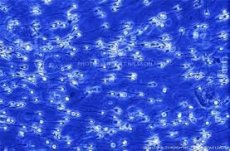Medical expert of the article
New publications
Scientists have discovered new proteins in sperm that increase susceptibility to HIV
Last reviewed: 01.07.2025

All iLive content is medically reviewed or fact checked to ensure as much factual accuracy as possible.
We have strict sourcing guidelines and only link to reputable media sites, academic research institutions and, whenever possible, medically peer reviewed studies. Note that the numbers in parentheses ([1], [2], etc.) are clickable links to these studies.
If you feel that any of our content is inaccurate, out-of-date, or otherwise questionable, please select it and press Ctrl + Enter.

Scientists at the Gladstone Institute have discovered new protein fragments in sperm that enhance the ability of HIV to infect new cells. The discovery could one day help curb the global spread of the HIV epidemic.
HIV/AIDS has killed more than 25 million people worldwide. In the United States alone, more than one million people are living with HIV.
Previously, scientists in Germany found that HIV transmission is linked to the presence of amyloid fibrils in sperm. Fibrils are small, positively charged structures that help the HIV virus find and attach to its target: CD4 T cells in the blood. Warner lab scientist S. Green describes a second type of fiber that also has this ability.
Recently, HIV prevention has focused on microbicides, chemical gels used by women during intercourse that block the passage of HIV. Microbicides have shown some effectiveness, demonstrating an average 39% reduction in the risk of infection. Given that research has failed so far, developing a truly powerful microbicide remains a top priority.
"Current microbicides are ineffective because, while they directly target the HIV virus, they do not prevent the virus from interacting with semen components. Now that we have a better understanding of how HIV binds to these components, we are one step closer to developing microbicides that can more effectively stop the spread of HIV," says first author Nadia R. Roan. Sexual transmission is the predominant route of HIV infection, and semen is a key vehicle for the virus to enter the human body.
Earlier studies by Roan and Green showed a mechanism by which positively charged fibers in SEVI semen attract negatively charged HIV and promote infection of CD4 T cells. In this study, they investigated whether other components of semen might play the same role.
In laboratory experiments on human sperm samples, the scientists identified a second type of fibrils - derived from larger proteins called semenogelins - that increase the risk of HIV infection in the same way as SEVI. Removing these and other positively charged components of sperm reduces the ability of HIV to infect CD4 T cells.
"Our experiments have shown that semenogelins - the main component of sperm - are a factor in increasing susceptibility to HIV," said Dr. Roan. "But we are intrigued by their natural, biological function, as they play an essential role in fertilization. We are currently studying these functions. We hope that this research will pave the way for the next generation of microbicides that can neutralize the fibrils and prevent the virus from entering the body."


 [
[